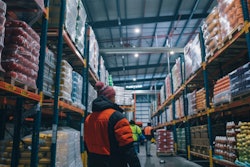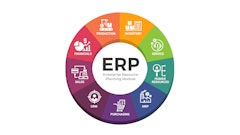
In the food and beverage industry, maintaining a resilient and flexible supply chain is critical for consistent product availability, cost control, and regulatory compliance. One of the most effective strategies for achieving this is supplier diversification—sourcing raw materials and ingredients from multiple suppliers across different regions.
As of 2025, supplier diversification has become even more essential due to economic and trade challenges, including new tariffs imposed under President Donald Trump’s administration.
Recent 25% tariffs on imports from Mexico and Canada, along with increased tariffs on Chinese goods, have significantly impacted food and agricultural supply chains. These policies have led to higher costs for raw materials, supply chain disruptions, and increased pressure on domestic sourcing.
To navigate these challenges, businesses must take proactive steps to manage supplier risk, implement diversification strategies, and leverage technologies to ensure stability and cost efficiency in their supply chains.
Understanding supplier diversification
Supplier diversification is the strategic practice of sourcing materials, ingredients, and products from multiple suppliers across different regions. This approach reduces reliance on any single source and strengthens supply chain resilience against tariffs, geopolitical conflicts, natural disasters, and supplier failures.
3 key benefits of supplier diversification
1. Risk mitigation
○ Minimizes exposure to trade restrictions, regulatory changes, and supply shortages.
○ Protects against price volatility by allowing businesses to shift procurement to lower-cost regions.
2. Supply stability
○ Ensures continuous availability of essential materials, reducing the risk of production delays.
○ Increases negotiation leverage with suppliers by maintaining alternative sourcing options.
3. Cost management
○ Balances costs by sourcing from multiple suppliers with competitive pricing structures.
○ Offsets the financial impact of tariffs and trade policies by strategically shifting procurement to lower-cost markets.
By integrating supplier diversification into their procurement strategy, food and beverage companies can strengthen their supply chain, reduce financial exposure, and adapt to evolving market conditions.
Impact of 2025 tariffs on the food and beverage supply chain
Recent tariffs imposed under President Trump’s administration have added significant challenges for businesses reliant on international imports.
Key effects of the 2025 tariffs
● 25% tariffs on imports from Mexico and Canada have increased the cost of fresh produce, dairy, and meat.
● Tariffs on Chinese goods have risen from 10-20%, impacting packaging materials, food additives, and equipment.
● Supply chain disruptions have driven up grocery prices, particularly for fresh fruits, vegetables, and processed foods.
Challenges for businesses
● Higher operational costs due to expensive raw materials.
● Reduced market access from retaliatory tariffs imposed by other nations.
● Increased pressure to shift procurement strategies to avoid long-term financial strain.
These trade policies highlight the urgent need for supplier diversification to mitigate supply chain disruptions and minimize the financial burden on businesses.
Conducting supplier risk assessments
To effectively manage supplier relationships, businesses must conduct thorough risk assessments to identify vulnerabilities and maintain supply chain resilience.
Key supplier risk factors
● Geopolitical risks. Political instability, trade restrictions, and sanctions that disrupt supply chains.
● Financial stability. The risk of supplier bankruptcy or financial distress.
● Compliance issues. Failure to meet food safety, regulatory, or ethical sourcing standards.
● Operational capacity. Limited production capabilities, labor shortages, or unreliable logistics.
Tools for evaluating supplier risk
● Kraljic matrix. Classifies suppliers based on market complexity and strategic importance.
● Predictive analytics. Uses data to forecast potential disruptions and supplier reliability.
● Risk management software. Provides real-time monitoring and automated risk scoring for suppliers.
By conducting regular risk assessments and leveraging data-driven tools, businesses can proactively address vulnerabilities and ensure a stable supply chain.
Strategies for mitigating tariff-induced risks
To reduce the financial impact of tariffs, food and beverage companies must implement
strategic risk mitigation measures, including:
1. Diversifying the supplier base
● Domestic sourcing. Engage with local suppliers to reduce reliance on imported goods.
● Alternative international suppliers. Identify suppliers in countries unaffected by tariffs to maintain stable procurement channels.
2. Establishing contingency plans and stockpiles
● Risk assessments. Evaluate supply chain vulnerabilities and prepare mitigation strategies.
● Inventory reserves. Maintain buffer stock of critical ingredients to absorb supply disruptions.
3. Implementing flexible production processes
● Agile manufacturing. Develop adaptable production systems to adjust to supply fluctuations.
● Scenario planning. Use predictive analytics to anticipate and respond to changes in supply availability.
By proactively implementing these strategies, businesses can reduce supply chain volatility and manage the financial risks associated with tariffs.
Leveraging technology to mitigate supplier risks
As supply chain complexities grow, there are software solutions designed to help with efficient supplier management and regulatory compliance, thereby mitigating business disruption.
How software solutions enhance supplier management
● Simplifies supplier tracking and risk assessment processes for increased productivity.
● Automates compliance monitoring to discover and address potential port entry issues promptly and proactively.
● Enables real-time visibility into supplier performance and shipment data for timely contingency activation.
● Identifies additional sources of the same food product already shipping to the United States for supplier diversification.
By leveraging software solutions, companies can optimize supplier management, reduce regulatory risks, and enhance supply chain stability.
Strengthen your supply chain through supplier diversification and technology
The food and beverage industry is experiencing increased volatility due to tariffs, supply disruptions, and shifting trade policies. To remain competitive and resilient, businesses must:
● Evaluate supplier diversification opportunities to reduce dependency on single markets.
● Implement technologies to streamline supplier management and compliance.
● Stay informed on geopolitical and trade policy developments to anticipate potential disruptions.
By embracing supplier diversification and leveraging compliance technology, food and beverage businesses can mitigate risks, stabilize operations, and ensure long-term success in an uncertain global market.
















